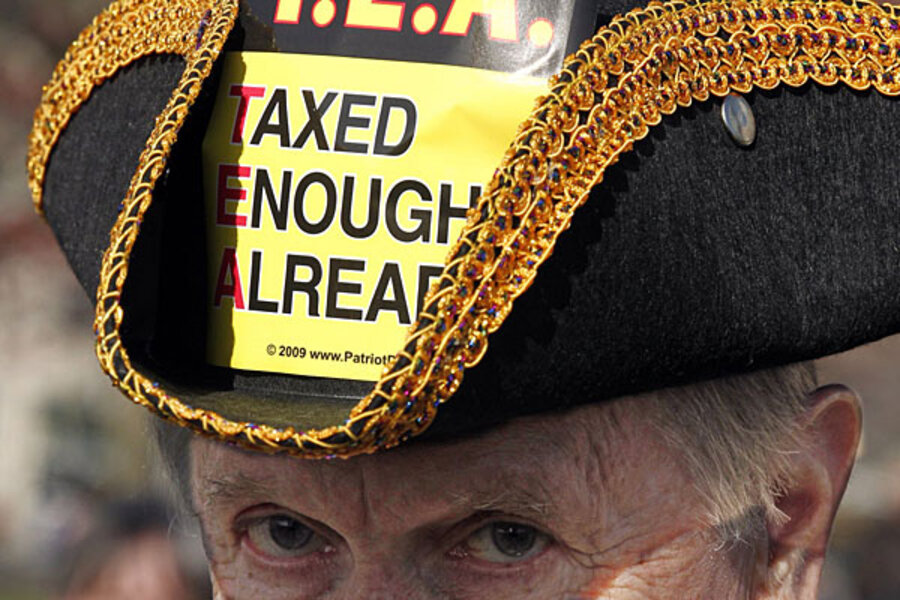Taxes and the rich: How much do they pay now?
Loading...
As millions of Americans prepare to file their tax returns, taxes are also back in the news for political reasons.
House Republicans passed a budget plan Friday for the 2012 fiscal year premised on the notion that both federal spending and taxes should go way down – including taxes on the wealthiest Americans.
Earlier this week, President Obama parried that Republican framework with his own fiscal plan, which sought more tax revenue even as he echoed the call for a streamlining of the tax code. Mr. Obama also doubled down on his proposals for the rich to shoulder more of the nation's tax burden.
In a press briefing on Thursday, White House budget director Jack Lew said that some $1.1 trillion in new tax revenue – which Obama's plan calls for over the next decade – could come entirely from high-income households earning roughly $250,000 or greater.
A big debate over tax policy is starting to heat up.
So, what are the facts behind the debate? How much do wealthier Americans already pay in taxes?
Quite a lot of money, but perhaps not as much as is implied by the nation's progressive income-tax brackets, in which tax rates rise along with income.
One analysis, released Friday, finds that high-income Americans pay overall taxes that are roughly proportional to their income – and that most lower-income groups do the same.
Who pays how much
To put it in numbers, according to the analysis, the top 1 percent of earners account for 20.3 percent of total personal income in the United States and pay 21.5 percent of all federal and state taxes. The middle 20 percent of households earn 11.6 percent of US income and pay 10.3 percent of taxes. The lowest 20 percent account for just 3.5 percent of income, and pay 2 percent of all taxes.
The numbers were reported by Citizens for Tax Justice, a research group that supports progressive tax rates, and drawn from calculations by the Institute on Taxation and Economic Policy.
Note that these numbers look at the broad mix of US taxes, not just income taxes. Federal gas taxes, payroll taxes, and state sales taxes offset the progressive tilts of the income tax and estate tax.
The report also sheds light from another angle, showing the percentage of income that each group pays in total taxes. Lower-income groups pay a smaller – but still significant – share of their incomes in taxes. For example, the lowest fifth of earners pay, on average, 16 percent of their income in taxes. At the higher end of the scale, the top fifth pay a bit more than 30 percent of their income in taxes, not much higher than the next fifth down.
And within that top tier, the top 1 percent pay 30 percent of their income in taxes, which is actually a bit less than the 31 percent of income that the next 9 percent of taxpayers pay.
Another research group, the Tax Foundation, which supports low tax rates, offers an analysis of the federal income tax in isolation. According to the Tax Foundation, the top 1 percent of earners account for 20 percent of "adjusted gross income" (an Internal Revenue Service measure) and pay 38 percent of income taxes. That shows how the income tax itself is progressive.
Other taxes often regressive
The contrast between this number and the tally by Citizens for Tax Justice also shows how other taxes levied in the US are often regressive in their impact on different income groups.
The current structure of tax brackets has rates that start at 10 percent of income at the low end and rise to 35 percent for the highest earners. In the middle are brackets of 15, 25, 28, and 33 percent. That top bracket doesn't mean the rich pay 35 percent of their adjusted gross income in taxes. Deductions and other factors lower their effective rate to 23 percent of income, the Tax Foundation reckons.
For comparison, the average tax rate for all taxpayers is 12 percent of adjusted income.
Of course, politicians and voters will have different views on what these numbers mean – what tax system is fair and optimal. And tax rates are just part of a larger policy puzzle that also entails thinking about the right level of federal spending and what kind of taxes are best for the economy and jobs. But the reports give an important benchmark of how much taxpayers are contributing now.





